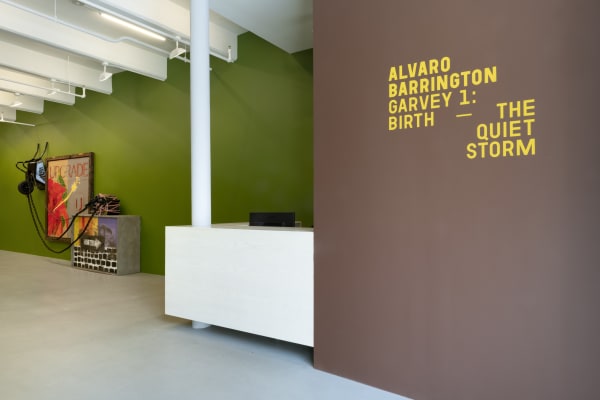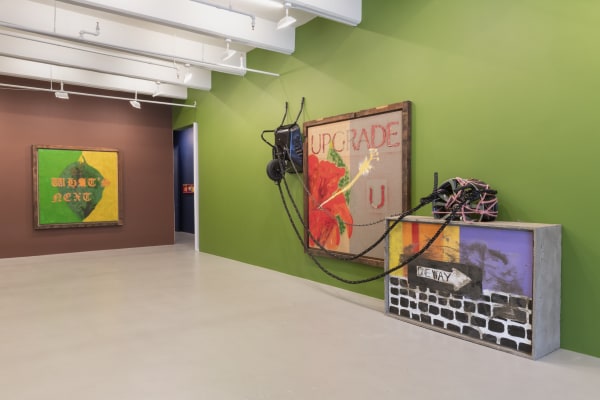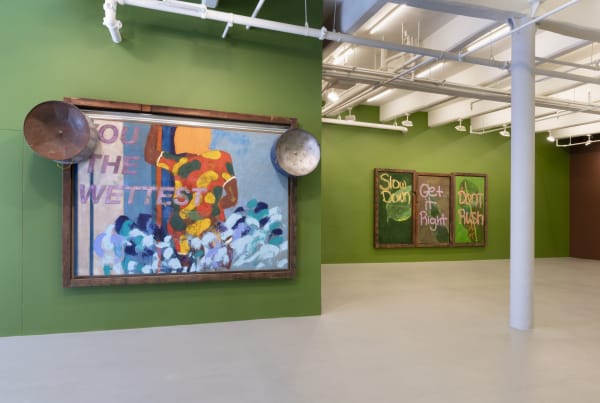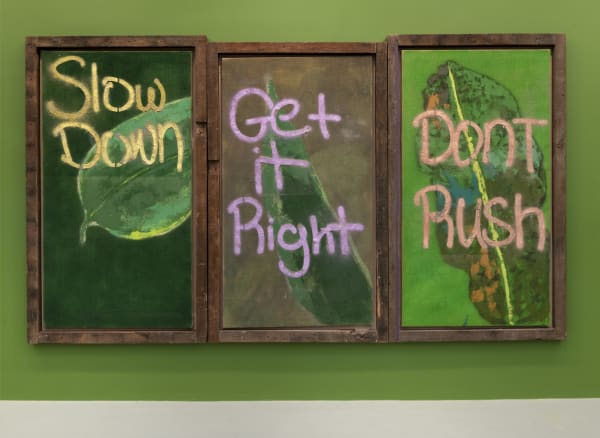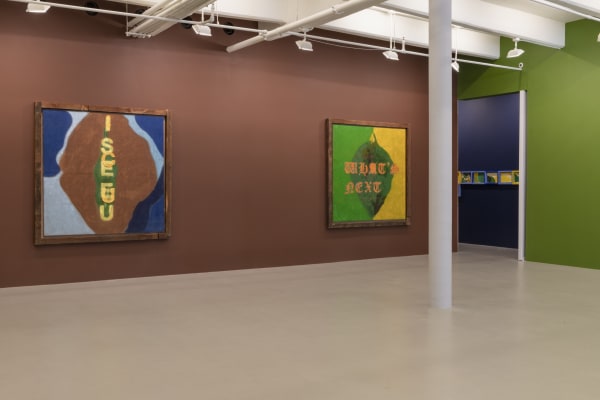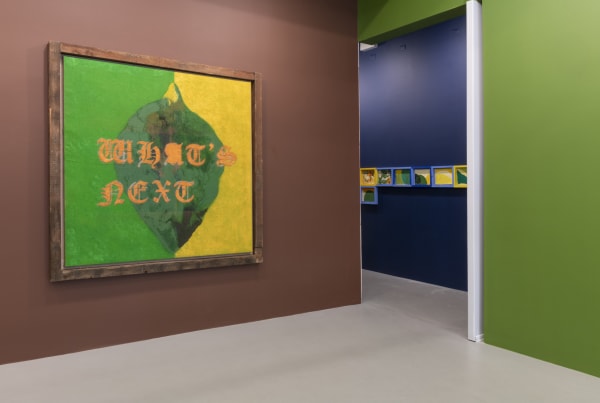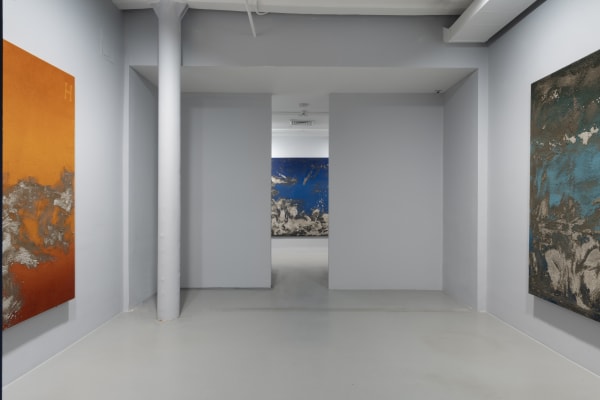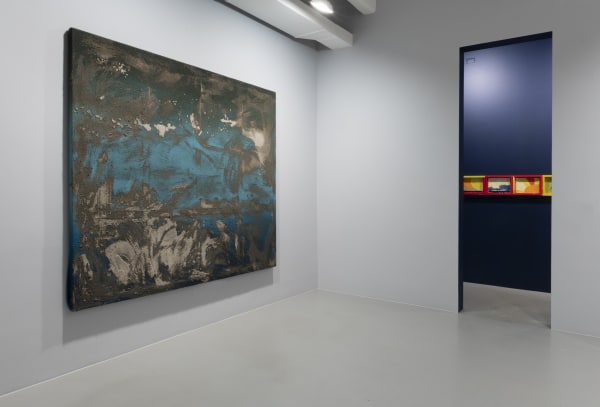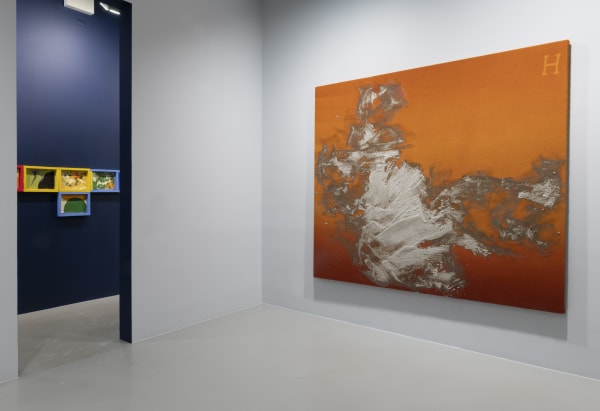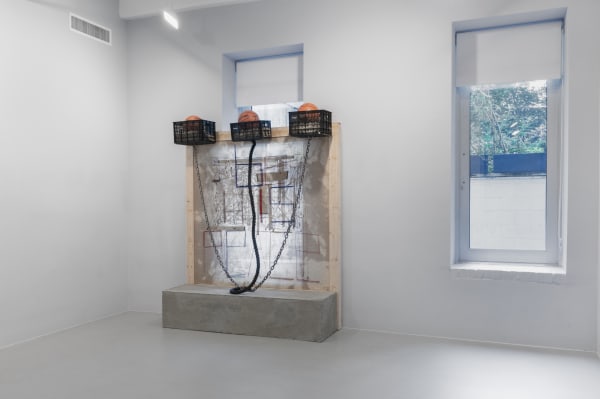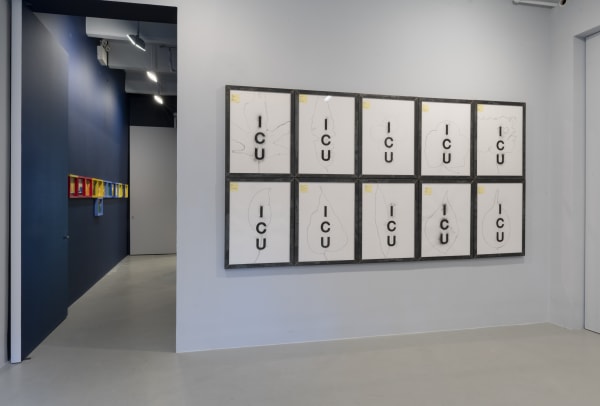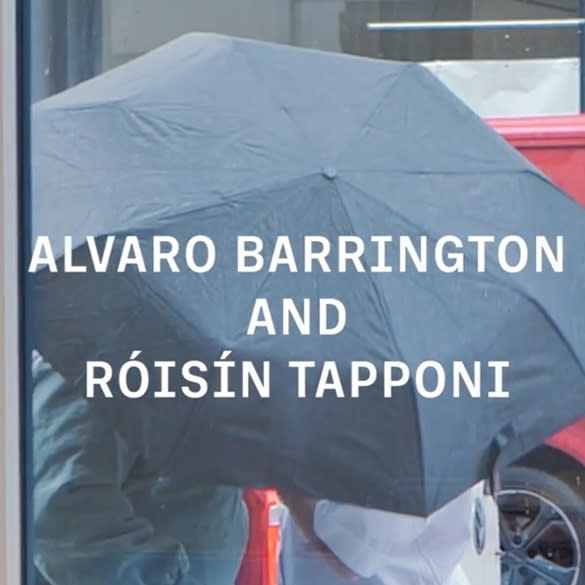Alvaro Barrington: GARVEY 1: BIRTH — The Quiet Storm
GARVEY 1: BIRTH -The Quiet Storm, explores birth, kin and the notion of being born into the traditions and material conditions of family.
Nicola Vassell Gallery is pleased to present, Alvaro Barrington: GARVEY 1: BIRTH -The Quiet Storm. It is the first chapter in a four-part ode by the artist to the life and work of Marcus Garvey, a Jamaican national hero, and political activist who founded the Universal Negro Improvement Association in 1914. Garvey, like Barrington, was born in the Caribbean and went on to live, work and forge important ties to the United States and England.
The similarities in their migratory paths, the ways in which both men’s lives correlate and what Barrington learns from Garvey, form the basis of the artist’s conceptual inquiry. Leaping from territory to territory and the attendant “mark-making” of these island citizens—in Garvey’s case a political and philosophical legacy and for Barrington, his familial and professional trajectory— is the baseline of a melody or tempo that Barrington portrays.
Garvey’s narrative is comprised of a series of actions similar to routes taken, the consequences of which, like a grid of intersections, overlap with and influence the lives and decisions of others. The Black nationalist’s formation of the UNIA, Negro World newspaper and Black Star Line, for example, influenced Malcom X’s mother, Louise Little, a Grenadian by birth, who was part of Garvey’s UNIA in Montreal and who imparted the teachings of Black pride and self-sufficiency to her son. This is a microcosm of what Barrington calls “exchanges of culture,” in which the customs of different cultures align, intertwine and adapt continuously.
-
 Alvaro Barrington, U the Wettest, 2021
Alvaro Barrington, U the Wettest, 2021 -
 Alvaro Barrington, Black Power, 2021
Alvaro Barrington, Black Power, 2021 -
 Alvaro Barrington, Slow Down, 2021
Alvaro Barrington, Slow Down, 2021 -
 Alvaro Barrington, Get it Right, 2021
Alvaro Barrington, Get it Right, 2021 -
 Alvaro Barrington, Don't Rush, 2021
Alvaro Barrington, Don't Rush, 2021 -
 Alvaro Barrington, ICU, 2021
Alvaro Barrington, ICU, 2021 -
 Alvaro Barrington, What's Next, 2021
Alvaro Barrington, What's Next, 2021 -
 Alvaro Barrington, Upgrade U, 2021
Alvaro Barrington, Upgrade U, 2021 -
 Alvaro Barrington, Cloud 3, 2021
Alvaro Barrington, Cloud 3, 2021 -
 Alvaro Barrington, Cloud 2, 2021
Alvaro Barrington, Cloud 2, 2021 -
 Alvaro Barrington, Cloud 1, 2021
Alvaro Barrington, Cloud 1, 2021 -
 Alvaro Barrington, 1916-236, 2021
Alvaro Barrington, 1916-236, 2021 -
 Alvaro Barrington, 1916-231, 2021
Alvaro Barrington, 1916-231, 2021 -
 Alvaro Barrington, 1916-237, 2021
Alvaro Barrington, 1916-237, 2021 -
 Alvaro Barrington, 1916-228, 2021
Alvaro Barrington, 1916-228, 2021 -
 Alvaro Barrington, 1916-224, 2021
Alvaro Barrington, 1916-224, 2021 -
 Alvaro Barrington, 1916-230, 2021
Alvaro Barrington, 1916-230, 2021 -
 Alvaro Barrington, 1916-238, 2021
Alvaro Barrington, 1916-238, 2021 -
 Alvaro Barrington, 1916-232, 2021
Alvaro Barrington, 1916-232, 2021 -
 Alvaro Barrington, 1916-234, 2021
Alvaro Barrington, 1916-234, 2021 -
 Alvaro Barrington, 1916-227, 2021
Alvaro Barrington, 1916-227, 2021 -
 Alvaro Barrington, 1916-229, 2021
Alvaro Barrington, 1916-229, 2021 -
 Alvaro Barrington, 1916-225, 2021
Alvaro Barrington, 1916-225, 2021 -
 Alvaro Barrington, 1916-233, 2021
Alvaro Barrington, 1916-233, 2021 -
 Alvaro Barrington, 1916-223, 2021
Alvaro Barrington, 1916-223, 2021 -
 Alvaro Barrington, 1916-235, 2021
Alvaro Barrington, 1916-235, 2021 -
 Alvaro Barrington, Be his Peace, 2021
Alvaro Barrington, Be his Peace, 2021 -
 Alvaro Barrington, Notes on Recovery, 2021
Alvaro Barrington, Notes on Recovery, 2021 -
 Alvaro Barrington, Notes on Being Present, 2021
Alvaro Barrington, Notes on Being Present, 2021 -
 Alvaro Barrington, Notes on Healing, 2021
Alvaro Barrington, Notes on Healing, 2021 -
 Alvaro Barrington, Notes on Forgiving Yourself, 2021
Alvaro Barrington, Notes on Forgiving Yourself, 2021 -
 Alvaro Barrington, Notes on Saying Fuck It, 2021
Alvaro Barrington, Notes on Saying Fuck It, 2021 -
 Alvaro Barrington, Notes on Yes to Strangers, 2021
Alvaro Barrington, Notes on Yes to Strangers, 2021 -
 Alvaro Barrington, Notes on Emotional Trauma, 2021
Alvaro Barrington, Notes on Emotional Trauma, 2021 -
 Alvaro Barrington, Notes on Claiming Time, 2021
Alvaro Barrington, Notes on Claiming Time, 2021 -
 Alvaro Barrington, Notes on Pain, 2021
Alvaro Barrington, Notes on Pain, 2021 -
 Alvaro Barrington, Notes on What U Need, 2021
Alvaro Barrington, Notes on What U Need, 2021
Nicola Vassell Gallery is pleased to present, Alvaro Barrington: GARVEY 1: BIRTH -The Quiet Storm, an exhibition exploring birth, kin and the notion of being born into the traditions and material conditions of family. It is the first chapter in a four-part ode by the artist to the life and work of Marcus Garvey, a Jamaican national hero, and political activist who founded the Universal Negro Improvement Association in 1914. Garvey, like Barrington, was born in the Caribbean and went on to live, work and forge important ties to the United States and England.
The similarities in their migratory paths, the ways in which both men’s lives correlate and what Barrington learns from Garvey, form the basis of the artist’s conceptual inquiry. Leaping from territory to territory and the attendant “mark-making” of these island citizens—in Garvey’s case a political and philosophical legacy and for Barrington, his familial and professional trajectory— is the baseline of a melody or tempo that Barrington portrays.
Garvey’s narrative is comprised of a series of actions similar to routes taken, the consequences of which, like a grid of intersections, overlap with and influence the lives and decisions of others. The Black nationalist’s formation of the UNIA, Negro World newspaper and Black Star Line, for example, influenced Malcom X’s mother, Louise Little, a Grenadian by birth, who was part of Garvey’s UNIA in Montreal and who imparted the teachings of Black pride and self-sufficiency to her son. This is a microcosm of what Barrington calls “exchanges of culture,” in which the customs of different cultures align, intertwine and adapt continuously.
This seriality plays in labyrinthine ways through Barrington’s paintings, which adopt multiple personalities and forms via concrete, wood, burlap, wool and re-purposed objects such as steel pans and oil drums. In so doing, a major theme of migration emerges: changing one’s material condition. Imagery of Caribbean flora—the banana leaf, money plant and aloe plant—become metaphors for multi-usage, while the hibiscus flower, a recurring emblem in Barrington’s work, plays on birth, life, sexuality and sentimentality.
Affirmative hip-hop lyrics and meme culture culled from his youth inform the work and are converted to text in the bodies and titles of his paintings.
Barrington’s hierarchy of ideas brings us to what he calls “embodied knowledge” and “art historical knowledge”—the former being knowledge that lives intuitively in a person because of one’s traditions. The latter describes an academic comprehension of art history. Both knowledges live meaningfully in The Quiet Storm and are activated by references embedded by the artist. The steel pan may be deciphered as music of the West Indies, while allusions to Abstract Expressionism, Ed Ruscha and Georgia O’Keeffe also live forthrightly in the work. Such plurality is the essence of Barrington’s process. He layers meaning within meaning and compounds ideas as a matter of form, material and concept.
Born in Venezuela to Grenadian and Haitian migrant workers, Alvaro Barrington was raised between the Caribbean and Brooklyn, New York, by a network of relatives. An unwavering commitment to community informs his wide-ranging practice alongside an exploration of migration and cross- cultural exchange. Barrington studied at Hunter College, New York, and received an MFA from The Slade School of Fine Art, London. Barrington’s work has been exhibited at MoMA PS1, New York and The Drawing Center, New York. Forthcoming exhibitions include, Mixing It Up: Painting Today at the Hayward Gallery, London and Alvaro Barrington: Spider the Pig/Pig the Spider at South London Gallery, September 2021. Barrington’s work is in the collections of The Hepworth Wakefield, London; Fundaciòn NMAC, Cadiz; Rennie Museum, Vancouver and X Museum, Beijing.






































